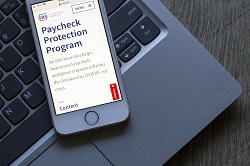 Small business owners may be able to breathe a sigh of relief thanks to a second stimulus package that allocates $284 billion to the Paycheck Protection Program.
Small business owners may be able to breathe a sigh of relief thanks to a second stimulus package that allocates $284 billion to the Paycheck Protection Program.
What Has Changed?
As of December 27, 2020, businesses can apply for PPP’s second eligibility period. Now is the time for small business owners who didn’t receive funding from the first relief package – or maybe didn’t receive enough – to apply for financial support.
The PPP cap dropped from $10 million to $2 million, but loans are now tax-deductible. That means you may have less taxable income for 2021. The program still requires that 60% of the funds go toward payroll, but you can cover other expenses as well, including:
- Human resources and accounting
- Computer software
- Supplier costs
- Personal protective equipment
- Vandalism not covered by insurance
PPP Loan Requirements
- Your business must have been in operation before February 15, 2020.
- You have 300 or fewer employees.
- Gross quarterly revenue is down 25% from 2019 to 2020.
- The maximum borrowed amount is 2.5 times your average monthly payroll. That number increases to 3.5 times monthly payroll for hospitality and restaurant businesses.
- You can prove that the loan is necessary for the continuation of your business activities.
- You’ve spent all of the first-round PPP funds you received.
Other Stimulus Funding Options

Economic Injury Disaster Loan: The Small Business Association provides the EIDL to supply quick relief to small businesses affected by the pandemic. Another change in relief regulations allows you to apply for the EIDL maximum of $10,000 and still receive full forgiveness for your PPP loan.
Employer Retention Credit Program: This funding option allows employers to continue to pay staff who would otherwise be cut from their payroll. It’s intended for those businesses that cannot receive a PPP loan. The credit limit increased from $10,000 per year to $10,000 per quarter.
Flexible Spending Accounts: Employers can now use FSAs to set aside employee compensation until the following year.
Contact the team at DRK and Company to learn how the new stimulus package may affect your investment opportunities.
Enjoy your week,

